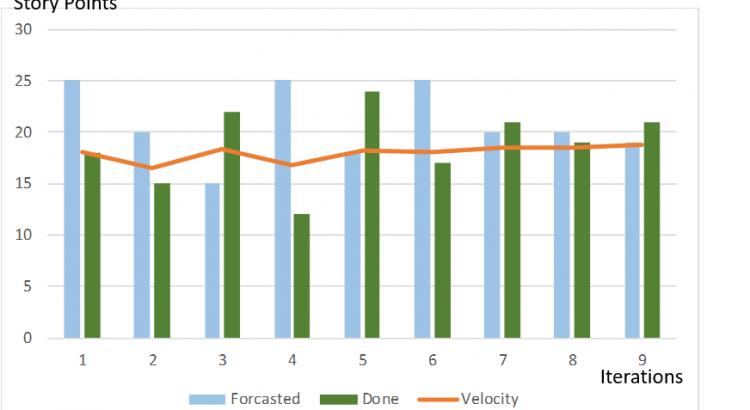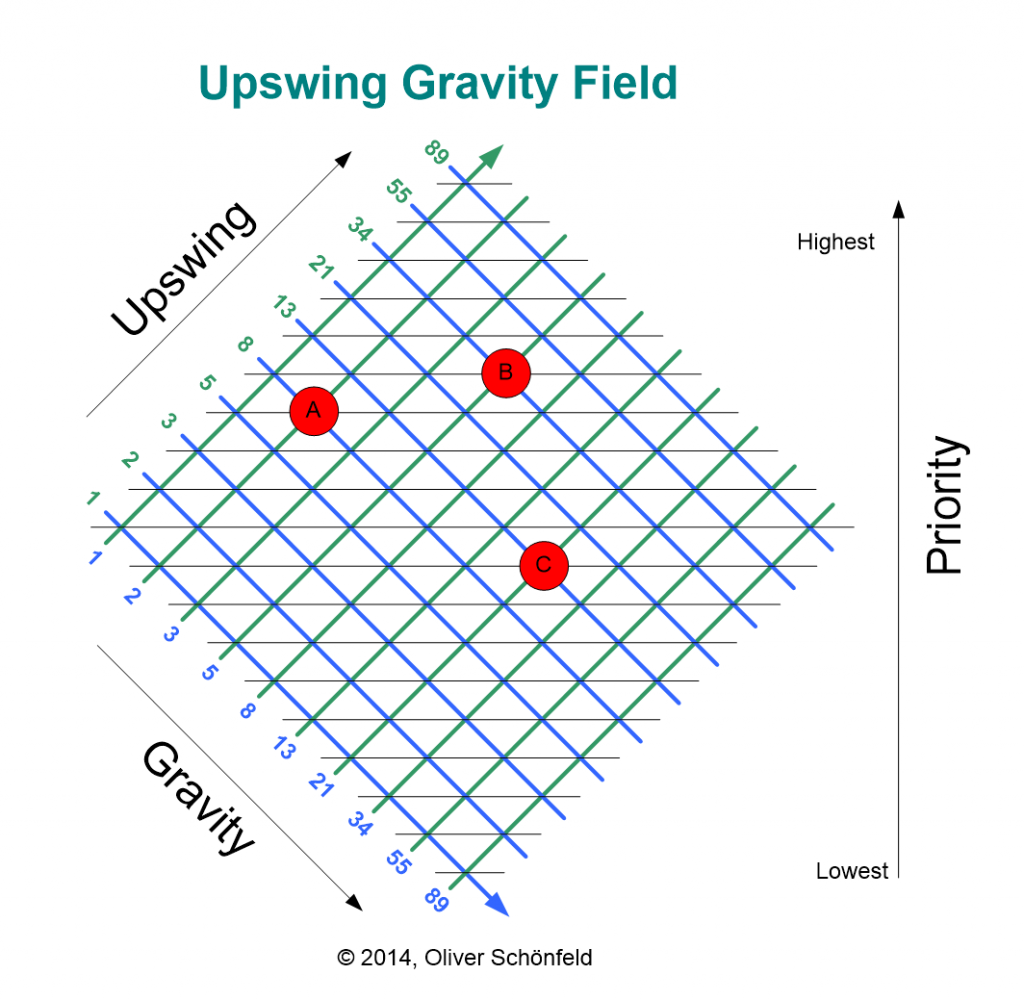Velocity is a measure of done Backlog Items delivered per Timebox (Iteration or Cycle). It is used to provide a forecast of future done work. Conditions are that the team and the timebox are stable over time.
Calculating Velocity

It is possible to calculate the Velocity of a Team for a single Iteration or Cycle. For better results we sum ip all “done” work of all timeboxes, measured in Story Points (SP), and divide them by the number of timeboxes. This results in the mean Velocity over time.
Application of Velocity
- Working Teams use it to calculate how much work to pull into the Iteration Backlog within Iteration Planning meetings. For better results it is typically normalized by non-regular absences like holidays and planned absences.
- Product Owners use it to predict milestones and release dates of products.
.
\r\n
Further suitable links:
| Events | Roles | Groups | Artifacts |
| Team Planning
. . |
Team Product Owner
. . |
Working Team
. . |
Team Backlog
. Usable Knowledge & System Increment . |



